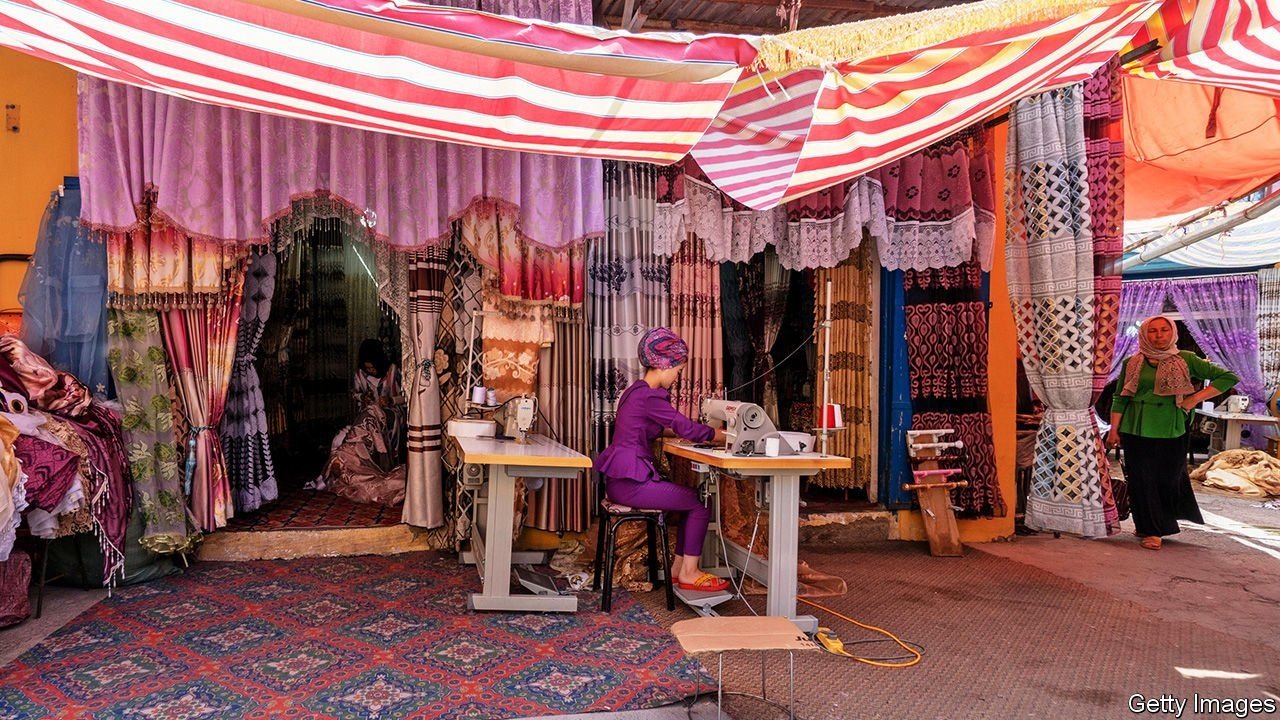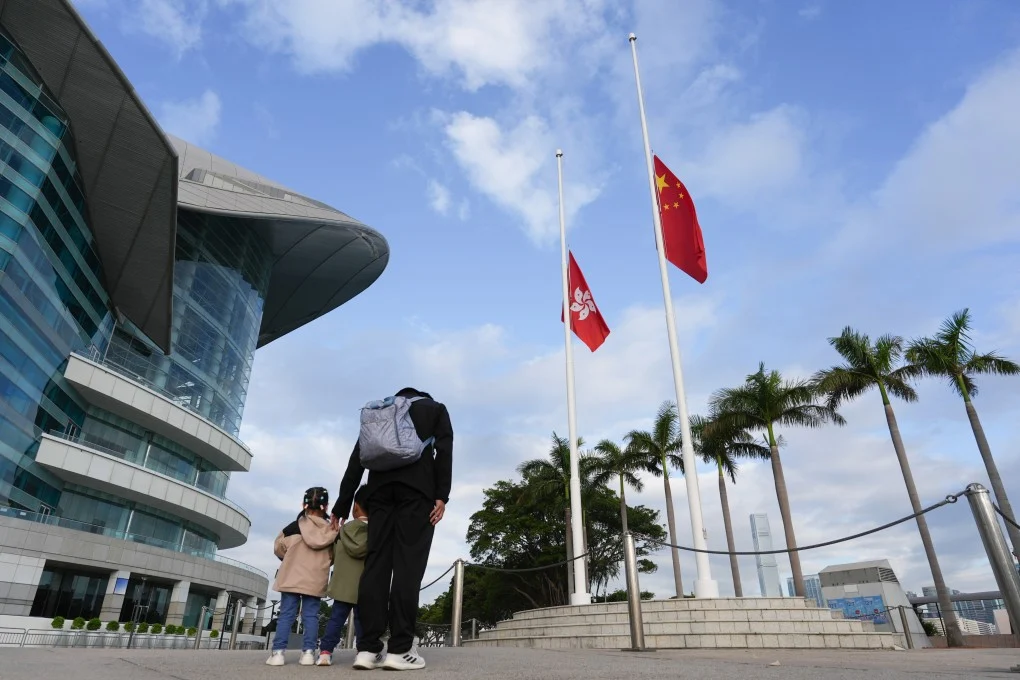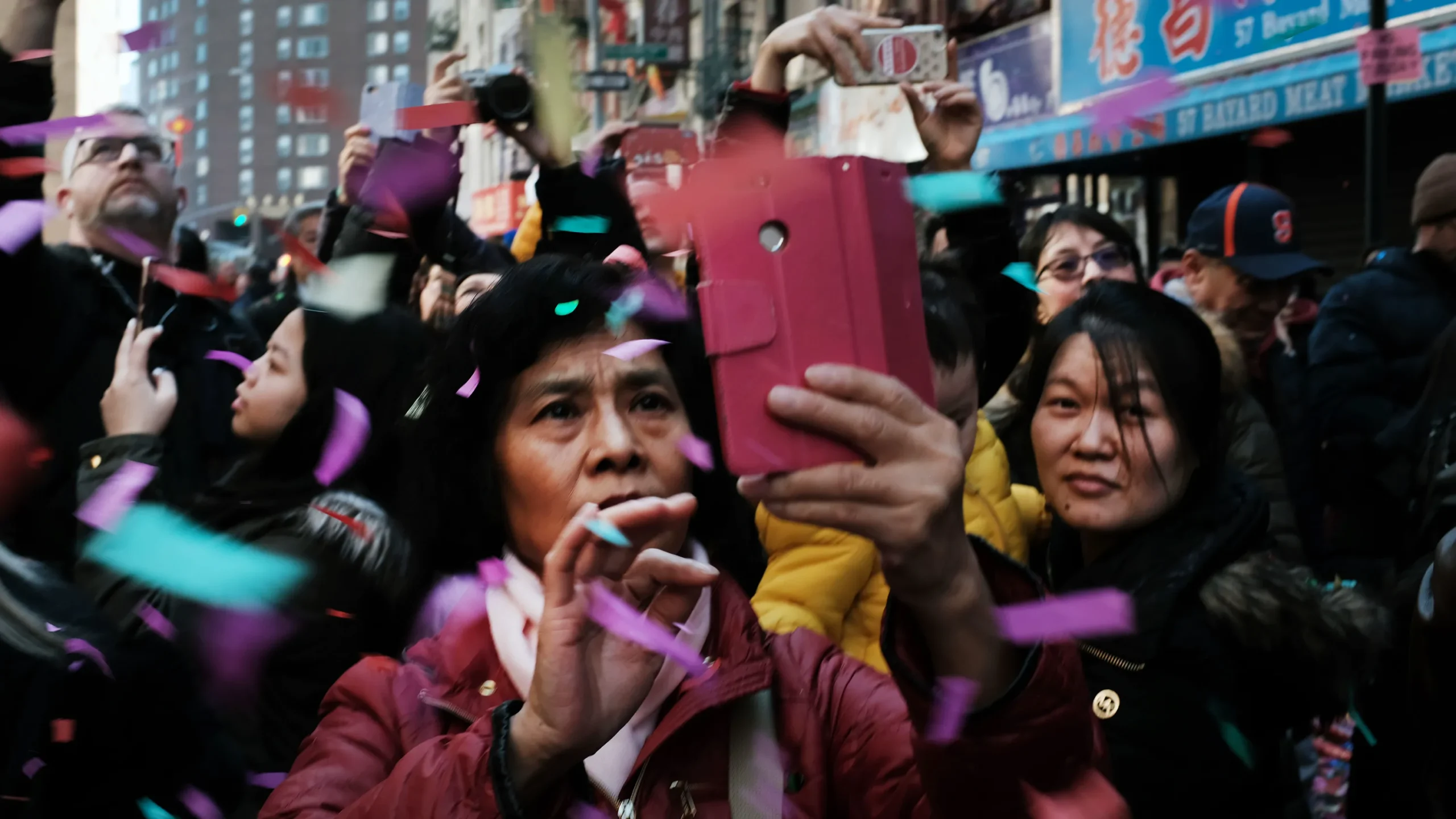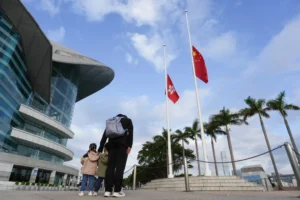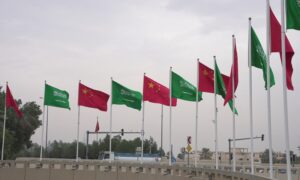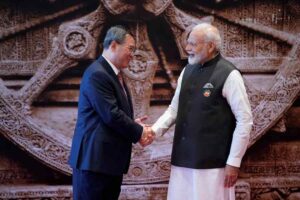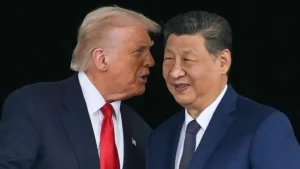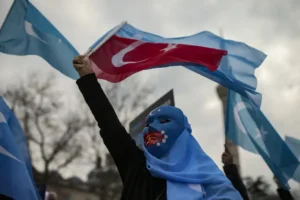China’s efforts to lift Xinjiang’s economy may smother it
C HINESE OFFICIALS used to insist that social harmony in Xinjiang could be achieved only by developing the far-western region’s economy. But in 2014 the government began to argue that for economic development to occur, stability was needed first. This small shift in wording heralded the fiercest storm.
Listen to this story Your browser does not support the
Authorities had long been troubled by occasional violence involving Uyghurs, a mainly Muslim ethnic group that makes up more than 40% of Xinjiang’s population of 26m. Over the past five years China has demolished thousands of Xinjiang’s mosques, thrown a million of its people into camps for “re-education”, placed the rest under high-tech surveillance and cut their links with the outside world. The government has shrugged off international criticism and Western economic sanctions against companies and officials deemed responsible for these abuses.
Buildings and roads around Xinjiang are decked today with signs proclaiming that the government wants “long-term peace”. It says there have been no “terrorist” incidents in Xinjiang since 2017, when it began rounding up Uyghurs for even the most trivial displays of religious or ethnic loyalty, such as praying in a public place or wearing a beard.
Now China is turning back to the economy. That does not mean easing repression. Highways remain dotted with checkpoints. Cameras rotate to track people as they walk past. The detention camps seem to have transferred many inmates to regular prisons. But Xinjiang is also launching industrial zones, pouring money into infrastructure and building new cities.
Already, Chinese officials are boasting of success. In July Chinese diplomats at the UN organised a video conference in which they insisted that Xinjiang was prospering, contrary to the “smears” of Western media. Late last year Xi Jinping, China’s president, said Xinjiang had scored “unprecedented achievements” in developing its economy and improving people’s lives. The reality is much grimmer.
Xinjiang’s economy can be divided into two halves. Much of its wealth and importance for China derives from its abundant supplies of energy. Related industries—oil and gas extraction, power generation and chemicals—account for more than half the region’s industrial output. As in other resource-rich parts of the world, they are relatively disconnected from society. They depend more on capital from large state-owned firms than on labour, and are concentrated in the sparsely populated north.
The other half of Xinjiang’s economy is more agrarian and more informal, centred in the south, where most Uyghurs live. This is the half the government is focusing on. There are three main planks to its efforts: fostering industries that create lots of jobs; reconfiguring the area’s economic links with other parts of China and the world; and promoting tourism.
The government has long encouraged labour-intensive industries to set up in Xinjiang. Now it is trying much harder. In its latest five-year plan for the region, finalised in June, it stressed the importance of basic manufacturing. It sees factories as the best source of steady, well-paid jobs.
Human-rights groups sense ulterior motives. Analysis of satellite imagery points to factories being built alongside many of the region’s expanding prisons. Testimonies from inmates suggest that forced labour is common. Many of those released from re-education camps seem to be on indefinite probation, compelled to work wherever they are assigned.
The government denies such allegations. It claims to have created jobs last year for about 2.7m “surplus labourers” in Xinjiang, many in textile factories. At present, textiles account for only about 2% of Xinjiang’s industrial output. That should soon start to rise. From Manas in the north to Bachu in the south, the government plans to boost production by building seven industrial parks, three industrial zones and a trading hub in Urumqi, the region’s capital. Employment in Xinjiang’s textile industry has grown from about 400,000 in 2017 to nearly a million today. The industry appeals to the government because it can be contained almost entirely within the region, from planting cotton (Xinjiang produces 20% of the world’s supply) to spinning yarn and making clothes.
About 25km outside Kashgar, the biggest city in southern Xinjiang, lorries unload bales of cotton at the factory gates of Dongchunxing, a state-owned fabric-maker that started production just four years ago and now has 5,000 employees, mostly Uyghurs. At lunchtime the scene looks similar to factories elsewhere in China. Workers in loose blue uniforms saunter out, some crowding round a snack stall, others zipping off on electric motorbikes.
A five-minute drive away, though, is a more sinister sight: two police checkpoints restrict access to another textile park, managed by the government of Akto county in Kizilsu prefecture, which borders Kyrgyzstan and Tajikistan. Nearby is a cluster of dormitory-like buildings behind the high walls of what an Australian think-tank has identified as a re-education facility. At one checkpoint, a Uyghur security guard sits at a table with two books on it: a short history of the Chinese Communist Party and a selection of Mao Zedong’s quotations. It is the kind of material that China believes will help cure wayward Muslims of extremist tendencies.
One difficulty with China’s industrial plans in Xinjiang is that many in the West want nothing to do with them. In July America’s Senate passed a bill that bars all goods from Xinjiang, unless importers can prove they were not made with forced labour—a virtually impossible standard.
The second part of China’s strategy could help overcome this hurdle. It involves making it easier for goods and labour to move around and out of Xinjiang. Over the past five years, the local railway network has expanded by 1,530km, or 25%. Over the coming five years the region will build 15 civilian airports, bringing the total to 37. Links with other countries are being strengthened. Of the six trade corridors that form China’s Belt and Road Initiative, three pass through Xinjiang (see map). The dry ports of Khorgos and Alashan—both on the border with Kazakhstan—have become busy. Exports from the Kashgar area, which plunged by nearly 50% in 2018 at the height of the re-education detentions, have stabilised over the past year. A manager outside the Akto textile park brushes aside a question about American sanctions. “Our products aren’t for the West anyway. We sell to Pakistan and Kazakhstan,” he says.
The third element, promoting tourism, could reap considerable benefits. Revenues from tourism already amounted to a quarter of Xinjiang’s GDP before the pandemic. It also helps advertise China’s success in imposing stability. This year about 200m tourists are expected. By 2025 the government wants to double that number to 400m, almost all from China.
From Silk Road to theme park
The message that Xinjiang is stable may also encourage more people from China’s ethnic majority, the Han, to settle in the south, diluting its Uyghur culture. The Xinjiang Production and Construction Corps, a Han-dominated state-owned conglomerate that functions like a state within a state, says it wants to encourage “southward development”. The bingtuan, as it is known, offers subsidies to migrants from outside Xinjiang. In Caohu, a village run by the bingtuan south of Kashgar, a Han construction worker from Shaanxi province says he was given a house when he agreed to settle there permanently.
Two years ago armoured vehicles and paramilitary police were ubiquitous in Kashgar. Today the city looks less intimidating, but retains few reminders of Uyghur identity. Streets that once echoed with calls to prayer are lined with trinket stalls. In one mosque near the centre, the room where worshippers used to wash themselves has been turned into a tourist toilet.
On heavily stage-managed trips, China has started bringing foreign diplomats to Xinjiang. When consuls-general based in Shanghai from countries including Belarus, Cuba and Serbia visited in June, Kashgar looked more like a theme park than an ancient Silk Road city, with Uyghurs in bright clothes singing and dancing to welcome the visitors. “We have seen the great effort by the government to improve the lives of local people,” gushed the consul-general of Singapore, according to Xinjiang Daily, a state-run newspaper.
Yet even in economic terms, the government’s story is unconvincing. Cash is flooding into the region: investment in factories, roads and other fixed assets rose by 16% in 2020, more than five times faster than the national average. But Xinjiang’s economy grew by only 3%—a weak outcome, given such spending.
Officials may hope that Xinjiang will follow the model of coastal provinces such as Guangdong and Zhejiang, where the path to prosperity began with factories that made cheap clothes and shoes. Yet the coast’s take-off was led by private entrepreneurs and made possible by a relatively free labour market. Uyghur workers, even if they are not in labour camps, cannot easily change jobs, let alone move around China without being hounded by police.
Many of the biggest investors in Xinjiang are state-owned firms, driven not by profit but by political duty. In the past Xinjiang had its own business leaders who were Uyghurs. But officials saw them as a threat. Many have disappeared into prisons and re-education camps. Far from laying a foundation for growth, the pursuit of such stability is more likely to end in stagnation. ■
